Library of Congress Cataloging-in-Publication Data Patrick, Jane.
The weavers idea book : creative cloth on a rigid-heddle loom / Jane Patrick.
p. cm.
Includes bibliographical references and index.
1. Hand weaving--Patterns. I. Title.
Acknowledgments
While working on a book is mostly a solitary experience, making a book involves a good many folk. Id like to thank the many individuals and companies who joined me on the journey that became this book:
First and foremost to my publisher, Interweave, without whose support this book would not have been possible. Im sure many have contributed, and I thank them for their efforts, with special thanks to the creative and publicity team. I extend an additional and heartfelt thank you to my editor Ann Budd.
Thanks to the following; it would not have been possible without you:
Judy Steinkoenig, my tech editor, who delved into the details and corrected and advised.
Lynn Tedder, who did more than just make pretty drafts.
Angela Johnson, my intern, who translated most of my rigid heddle patterns into computer drafts, as well as helped out in the Schacht office and wove samples in her spare time.
Sara Goldenberg White, my weaving intern and seamstress who came to my house nearly every day during the summer to warp looms, weave samples and projects, and sew most of the pieces in the book.
My weavers and designers: Melissa Ludden Hankens, Betsy Blumenthal, Jessica Knickman, Stephanie Flynn-Sokolov, Gail Matthews, and Judy Steinkoenig.
To Schacht Spindle Company for generously giving me time off to work on this book, as well as hiring summer interns to assist me. I am especially grateful to the office staff who kept it all going: Gail, Stephanie, Liz, and Christy.
To my husband, Barry Schacht, for his love and support.
To my friends at my local weaving shop: Shuttles, Spindles, and Skeinsall that yarn in stock made designing so easy.
To the following yarn companies who provided yarn for projects: Brown Sheep Company, Berroco Yarns, Cotton Clouds, Crystal Palace Yarns, Louet North America, and SWTC. Thank you to Fiberworks for providing me with an upgrade with their sketchpad feature, which helped making the drafts much, much easier. Thanks also to Schacht for providing all of the rigid heddle looms to weavers for this book.
A special thank-you to Betty Davenport for her contributions to the field and for her book Patterns and Textures on the Rigid Heddle Loom, which has taught me volumes over the years.
All of the samples and weavings are by the author except where noted.

Contents

In 1978 or so I was asked by Robin Taylor Daugherty to take over teaching the rigid heddle weaving classes shed been offering through the City of Boulder. I had taken a 4-shaft class from Deborah Chandler (then Debbie Redding) at the Weaving Shop in Boulder, and I was weaving every free moment. Even though I was pretty much a beginning weaver, I felt confident I could handle rigid heddle weaving. With a little tutorial from Robin, I was ready to teach my first classthus commencing my involvement with the rigid heddle loomlittle did I know
Even though I was teaching rigid heddle weaving, Im pretty sure that in my own mind I discounted it as inferior and not real weaving! This was just something to do before moving on to weaving on a floor loom. But as I wove on the rigid heddle loom, I found it increasingly surprised me.
A few years later when I applied for a job at Interweave Press, I was not a veteran weaver by a long shot. Id been working in a federal CETA youth employment program and funding was running out. I didnt know what I was going to do next. I did know, though, that I wanted my next step to somehow involve weaving. I thank Deborah Chandler for steering me in that direction.
At Deborahs suggestion I called Linda Ligon, founder of Interweave Press, about a job. I polished up my resume and drove to Loveland. Our interview was more a lunch conversation, but in a few days I received a letter in the mail with a job offer. I was elated, thrilled.
As a new, enthusiastic weaver, working at Interweave Press was the best of all worlds. Every day I talked or corresponded with weavers, I saw loads of weaving and grew to appreciate the depth and breadth of weaving. When I look back, editing Handwoven taught me volumes about weaving, and it was in working on editorial material for the magazine that I began to truly appreciate the rigid heddle loom.
I am grateful to Betty Davenport, who was a frequent contributor during my tenure. Through the projects she submitted to Handwoven, I saw firsthand the broad capabilities of the rigid heddle loom. I learned also that you dont need sophisticated equipment to make super designs. Betty credits Suzanne Gaston-Voute for teaching her much of what she learned about the rigid heddle loom. Others, too, have contributed to the field, namely David B. McKinney and David Xenakis.
I should also mention that shortly after I began working for Interweave Press, I married Barry Schacht of Schacht Spindle Company. I had actually been teaching on the Schacht rigid heddle loom when I taught for the City of Boulder. Now, all aspects of my life were encompassing my passion for weaving. What more could a girl ask for?

I was also led down the rigid heddle path by my friends at Shuttles, Spindles, and Skeins, my local yarn shop in Boulder. They needed someone to teach rigid heddle weaving and recruited me to be part of their faculty. I have been teaching there for many years, as well as teaching rigid heddle workshops and classes throughout the United States.
I wanted to write this book because I kept hearing weaversnew and old alikelament that they could only weave plain weave (over, under, over, under) on a rigid heddle loom. Every time, Id reply that much, much more was possible. Even so, I begin my rigid heddle explorations with plain weave because it has more to offer than at first you might suspect. Though plain weave is simple in structure, it can be complicated in design. Youll see in that a simple structure is no deterrent to stunning fabric.


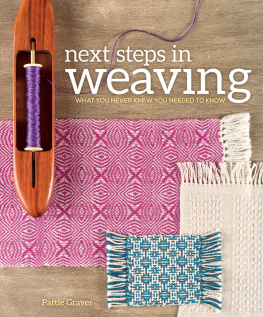
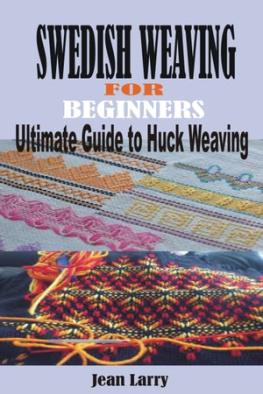
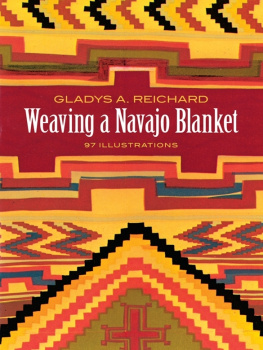
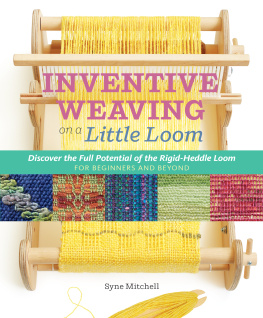
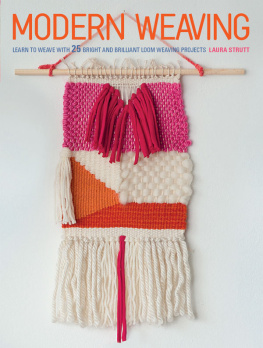



 INTERWEAVE PRESS LLC
INTERWEAVE PRESS LLC

